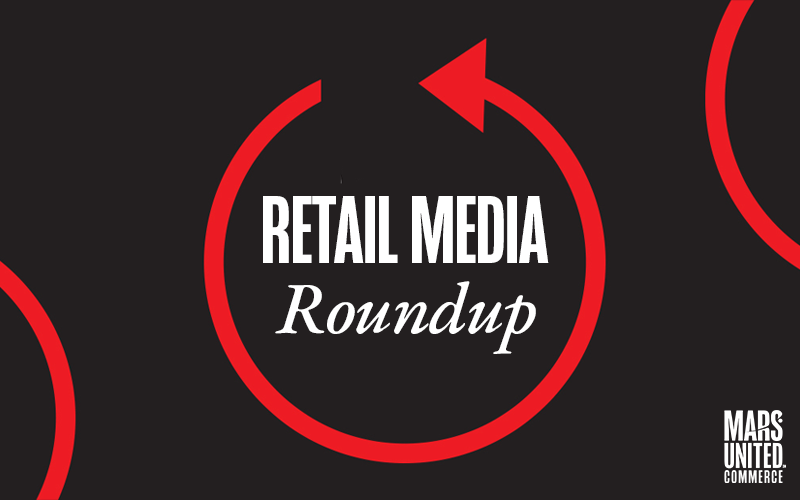We are back with another instalment of all things eCommerce put together by Gavin McColl and Tirion Reid in our eCommerce Team.

Amazon has claimed the top spot in the Australian eCommerce marketplace, outperforming competitors including eBay, according to the latest research by global eCommerce accelerator, Pattern.
Digital marketplace shopping is undergoing a significant transformation in Australia, with 93% of consumers engaging in marketplace shopping in 2023, and an impressive 94% expressing their intention to purchase from platforms such as Amazon, Catch, Temu and eBay in the upcoming year. These insights were revealed as part of Pattern’s sixth annual ‘Marketplace Consumer Trends Report – 2024’ – shedding light on evolving eCommerce shopper habits and market trends in the country.
Disruption in the Australian Marketplace Sector
The Aussie eCommerce Marketplace is experiencing a wave of disruption, with emerging platforms like Temu and Shein gaining substantial market share. Notably, 25% of shoppers have turned to Temu, while 21% have chosen Shein. In contrast, established platforms like Catch and eBay faced reported underperformance in 2023.
Amazon has emerged as the dominant marketplace and is expected to achieve a staggering $5.5billion in Australian turnover by the end of the current financial year. Amazon now outperforms all other marketplaces on average monthly site visits after achieving an average of 75.2million monthly site visits, surpassing eBay by a significant 48% in the last three months of 2023.
Merline McGregor, General Manager at Pattern Australia notes that:
“New marketplace entrants into Australia, like Temu, are shaking-up the sector and quickly attracting consumer interest. However, it’s expected that Amazon’s leading market position will only grow, as the platform wins shoppers with competitive prices, the widest product range and ease-of-use shopping via Prime.”
Amazon Projected Growth and Changing Consumer Habits
Amazon is on track to achieve the highest growth rate of any marketplace in 2024, with 63% of Australians planning on buying from the site (+6% annual growth) compared to a projected 8% decrease in people planning to buy from eBay. Notably, 80% of shoppers who were in the $200k income bracket bought on Amazon, reflecting its strong reach among higher-income consumers.
Despite the increased pressure amid the cost-of-living challenges, Australians are expected to continue online shopping, with the eCommerce market project to reach $64.14billion this year. However, the cost-of-living challenges will impact consumer budgets, leading to a 29% decline in those intending to spend online in 2024.
Consumers are therefore more likely to capitalise on major sales events, following a 20% growth in Black Friday/Cyber Monday participation in 2023.
Product Search & Discovery
Google’s dominance in product searches is slipping, with consumers increasingly turning directly to retailer sites (+6%) and marketplaces like Amazon (+59%) for inspiration. This puts real emphasis on the importance of your digital shelf health, particularly product listing pages and search strategy.
“Marketplaces today have an abundant volume of goods for consumers to search. These platforms build confidence with shoppers to research and purchase new products through enhanced transparency and credibility. This is achieved by providing real-world product reviews and informative answers to product page questions,”
said McGregor.
So, what are consumers looking for and where are they looking for it?
Pattern’s research asked consumers what they were likely to buy in 2024 and through which marketplace, with the results indicating:
- Amazon’s key shopper categories are Books & eBooks (26%), Electronics & Computer (24%) and Home & Kitchen (24%).
- eBay is competitive across a range of categories, including Electronics & Computer (17%), Home & Kitchen (16%) and Clothes, Shoes & Accessories (16%).
- Catch is popular for Toys, Kids & Baby (12%), Home & Kitchen (10%).
- Kogan will remain strong in Electronics & Computer (11%), Home & Kitchen (9%).
- Shein is set to grow through Clothing, Shoes & Accessories (16%).
- Temu attracts shoppers with Clothing, Shoes & Accessories (10%), Home & Kitchen (7%).
- My Deal’s sales will come from Home & Kitchen (5%) and DIY Home Improvement (4%).

Consumer Sentiment in Australia has been a hot topic for months as levels reached lows that had only previously been seen once in the previous 10 years, with that occurring right at the start of COVID lockdowns in 2020. Whilst we have seen some slight improvements in the past month, confidence levels remain low.
So, what does this mean for retailers and brands?
This year we can expect to see a significant increase in focus on loyalty at the core of marketing strategies as well as narrowing in on Customer Lifetime Value as a key measure of success.
Recent research revealed that a huge 95% of Australians are members of a loyalty program, with adoption growing by 18% year-on-year. Naturally the cost-of-living crisis is a key factor as consumers proactively seek out the best prices.
But how quickly can this perceived loyalty dart out the door? Well, it tends to differ per category, with a surprising 60% of consumers remaining loyal to their grocery of choice purely because they are part of their loyalty program. When it comes to Homewares, Fashion and Takeaway Food, loyalty is related to liking the look and feel of that brand or retailer.
As to why a consumer might be ‘disloyal’, in the grocery space it largely relates to whomever has the cheapest option available.
What are the lessons to be learned here? Whilst price is naturally a significant factor when it comes to securing a conversion, price does not equate loyalty – the most critical element is feeling a connection to a brand so keep that at the core of your marketing efforts.

Australian liquor retailers are feeling the pinch as consumer spend in the alcohol category significantly declines year-on-year.
Between October 2022 and October 2023, online liquor sales dropped by 18.1%, with this double-digit decline being felt across all categories. But does this reflect a change in consumer drinking habits? Or can it be attributed to a levelling off from the lockdown-driven, inflated sales spike?
The answer is ultimately a bit of both, with consumers spending 2.3% less per transaction yet the average frequency of liquor store visits seeing growth of 3.5%.
With the economic outlook appearing positive for 2024, expectation is we will see online sales in the liquor space normalise and return to a period of growth over time.

Now into some global news, American fast-food burger joint Wendy’s raised eyebrows recently when they announced they would be trialling ‘dynamic pricing’, leading many to interpret this as meaning they would adopt a similar ‘surge-pricing’ model pioneered by Uber.
In other words, you’ll be paying more for your burger during the lunchtime rush, less at quieter times.
Wendy’s were quick to dispel the consensus that they were adopting surge-pricing to raise prices in high-demand times, assuring that there is a difference between ‘dynamic’ pricing and ‘surge’ pricing.
So what is the difference? Is there any? Are Wendy’s just trying to quell bad publicity to this announcement?
Whilst both relate to price fluctuations, dynamic pricing should in practice mean that prices can increase but also decrease and become cheaper – surge pricing relates to there being a base price and the only change is an increase. So from Wendy’s perspective, dynamic pricing should mean that their customers are getting greater value at quieter times.
These types of pricing models are nothing new, with Uber obviously the poster child but we see it in action across areas including accommodation and flights. Whether the move by Wendy’s will see a broader adoption in the food space remains to be seen so keep your eyes peeled!
For more information or to understand how we can support your brand online, please reach out to the eCommerce team at XPO:The Mars Agency to see how we can propel your eCommerce strategy this year.



